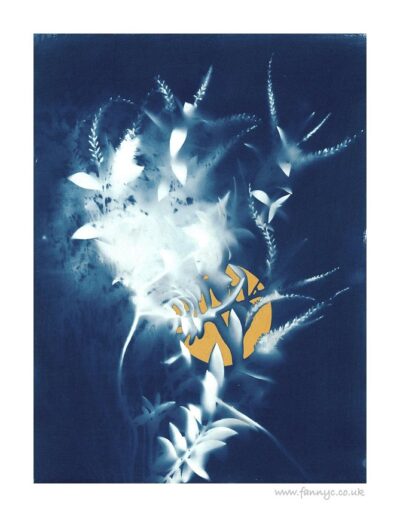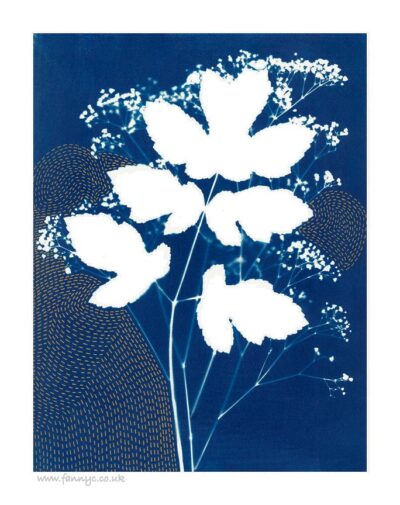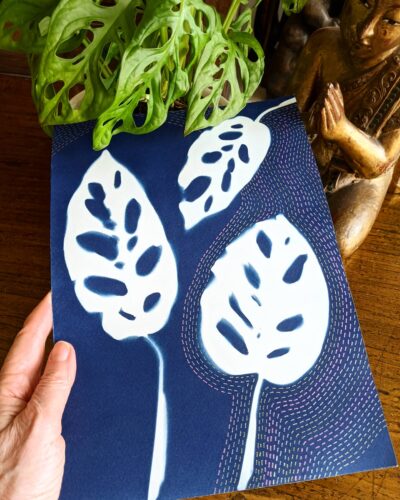My original cyanotypes including those featured below are available for sale in my Etsy shop
A selection is also available on the website in my shop
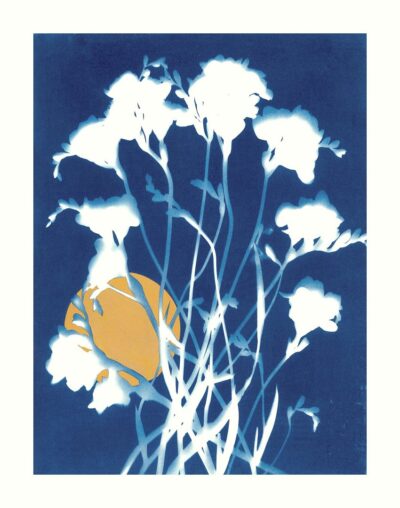
Freesias in a Rising Moon with Original Gold Drawing Available in my shop
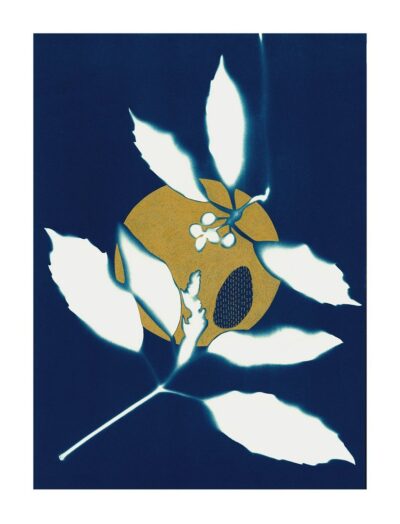
Honeymoon with Original Gold Drawing available in my shop
Cyanotypes (also known as photograms, sunprints and blueprints) are the earliest form of photography. Their creation involves coating paper with light sensitive chemicals, placing an object onto the paper and exposing it to sunlight. The image is captured on the paper.
Anna Atkins (1799–1871) was the first woman photographer. Referred to sparingly by traditional photo historians, she made beautiful cyanotype images of algae, ferns, feathers, and waterweeds. Her botanist father, John George Children and Sir John Frederick William Herschel were friends, and the Atkins and Herschel families resided only 30 miles apart in Kent. Herschel was an English polymath active as a mathematician, astronomer, chemist, inventor, experimental photographer who invented the blueprint and did botanical work.
Children was a member of the Royal Society, and when his friend Herschel announced his discovery of the cyanotype in 1842, Children quickly passed the news on to his daughter Anna. Although there is no conclusive evidence that Herschel was Atkins’s mentor it is more than probable that she learned the cyanotype process in the Herschel household.
Anna Atkins made thirteen known versions of her work entitled British Algae: Cyanotype Impressions (1843–1853). In October 1843 Atkins began issuing published folios of her photogenic (photogram) drawings. In 1850, she began to publish more comprehensive collections of her work, completing a three-volume anthology in 1853. These books, containing hundreds of handmade images, were the very first published works to utilize a photographic system for purposes of scientific investigation and illustration.
The historic cyanotype prints created by Anna Atkins in the mid -19th century are still available in museums and galleries around the world for us to continue to enjoy today. There are examples of Atkins’s work at the Harry Ransom Humanities Research Center at the University of Texas, the Getty Museum, and public, institutional, and private collections in the United Kingdom and the United States.
